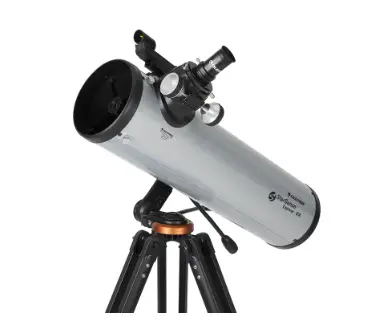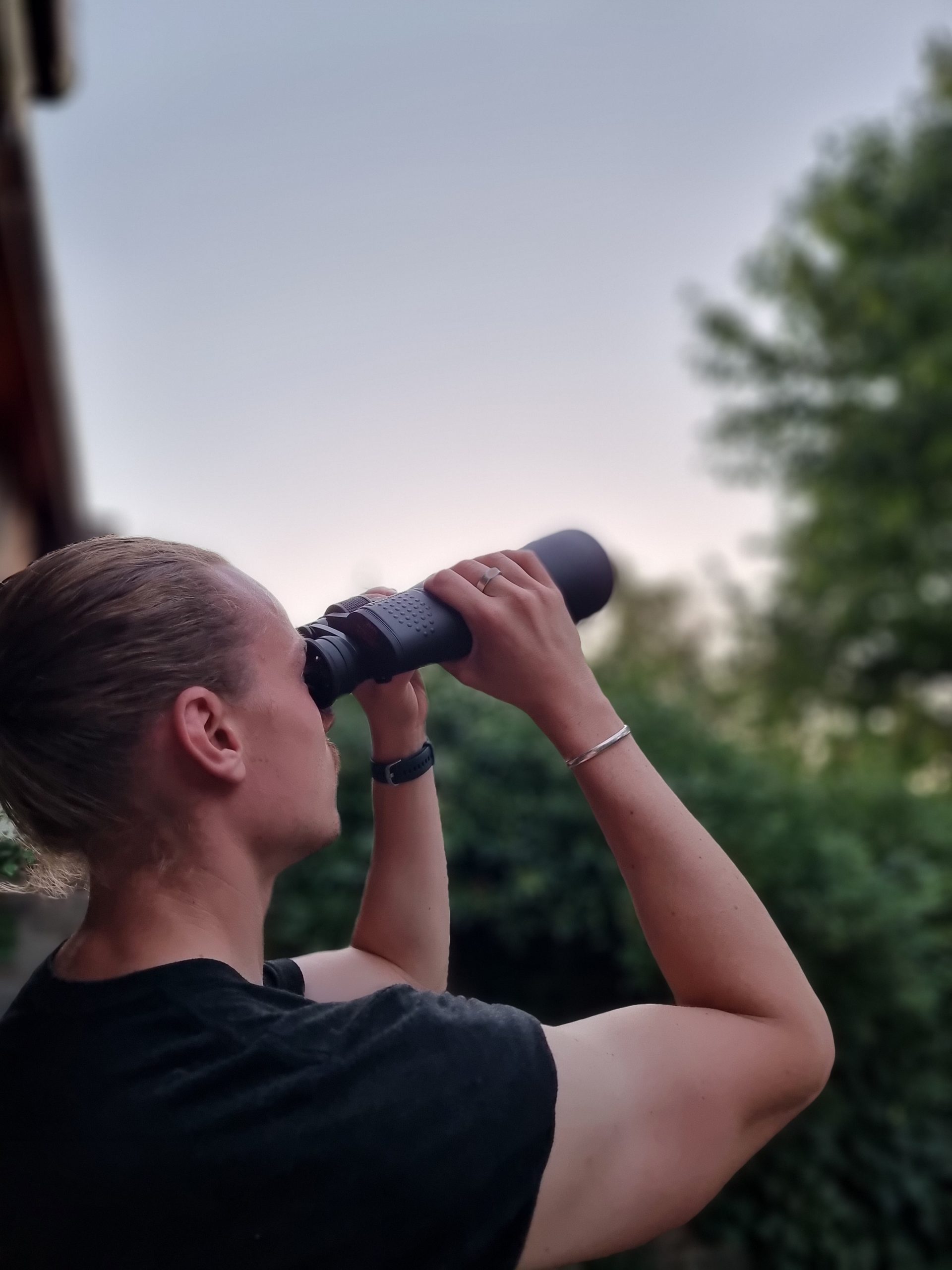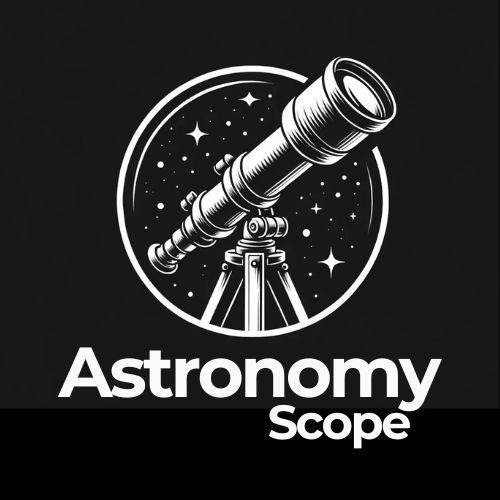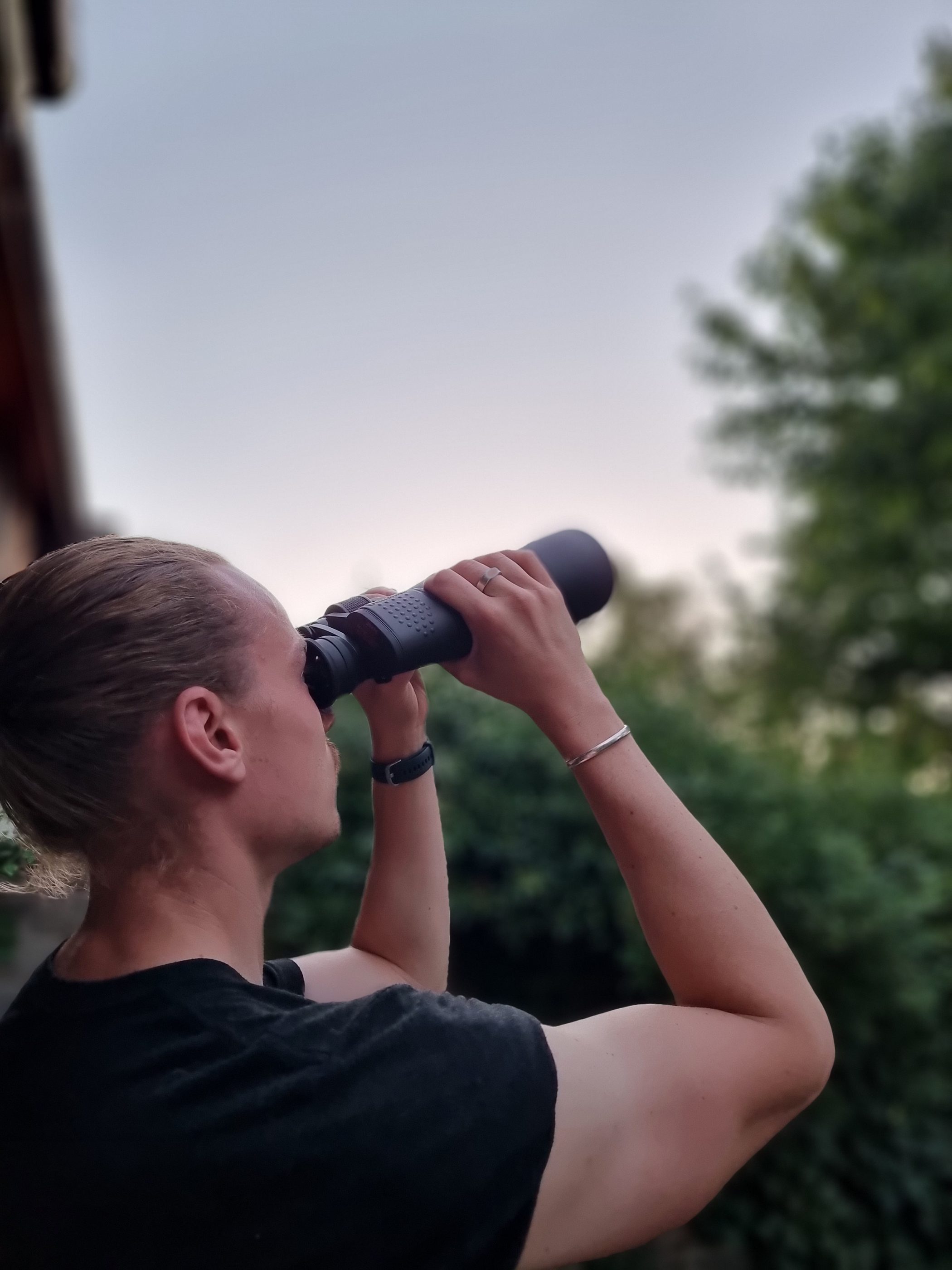Diving into the world of stargazing can be daunting with numerous telescope options available. If you are here, chances are you are pondering whether the Celestron Starsense Explorer DX 130az’s added cost is justified over the 102az.
In this guide, we compare the specifications, differences, and similarities between these two models, helping you make an informed decision based on your needs and budget.
By the end, you’ll know if the DX 130az or the 102az is your ideal astronomy partner, and whether the 130az’s extra cost is a worthwhile investment.

Quick Verdict
The Celestron Starsense Explorer DX 130az is my top pick for its superior performance and durability.
With a 63% larger aperture and 63% more light-gathering power than the 102az, it offers 28% higher magnification, yielding clearer and brighter celestial views.
Despite its higher cost, the 130az’s enhanced features justify the investment for the avid stargazer.
Celestron Starsense Explorer DX 102az vs 130az




Differences Between the Celestron Starsense Explorer DX 102az vs 130az
Optical Design
One of the most crucial differences between the Celestron Starsense Explorer DX 130az and the 102az is the optical design.
The 130az is designed as a Newtonian Reflector, whereas the 102az is a Refractor.
A Newtonian Reflector uses a concave mirror to gather and focus light, providing a more detailed, sharper image of distant celestial bodies.
This type of telescope excels in viewing deep-sky objects like galaxies and nebulae.
On the other hand, Refractor telescopes like the 102az use lenses to gather and bend (refract) light.
These telescopes are ideal for bright, single-point sources like stars and planets.
Aperture Size
In the world of telescopes, aperture size is king.
The aperture is essentially the diameter of the telescope’s main optical component and determines how much light the telescope can gather.
With an aperture of 130mm (5.11″), the 130az has around 27% more light-gathering capacity than the 102az, which has an aperture of 102mm (4.01″).
This means brighter, clearer images and the ability to see fainter objects.
Focal Length
Focal length dictates the magnification and field of view of a telescope.
While the focal lengths of the 130az and 102az are fairly close, at 650mm (25.59″) and 660mm (25.98″) respectively, this minor difference paired with the larger aperture of the 130az results in a higher potential magnification.
Focal Ratio
The focal ratio, calculated by dividing the focal length by the aperture, influences the brightness and field of view of the images.
The 130az has a focal ratio of f/5, making it a faster telescope that offers wide, bright views, ideal for observing larger deep-sky objects like nebulae and galaxies.
In contrast, the 102az has a focal ratio of f/6.5, meaning it’s slower and provides narrower fields of view.
While this could be beneficial for observing planets or binary stars, the versatility and broad sweep views offered by the 130az’s f/5 ratio make it a more desirable option for a wide range of celestial observations.
Highest Useful Magnification
Speaking of magnification, the 130az boasts a highest useful magnification of 307x, a significant step up from the 102az’s maximum of 240x.
This allows for greater detail when observing planets and distant deep-sky objects, making the viewing experience more satisfying and insightful.
Light Gathering Power
The light-gathering power of a telescope is closely linked to its aperture and significantly affects the clarity and brightness of the images it produces.
With a light-gathering power of 345x, the 130az outshines the 102az, which has a capacity of 212x.
This gives the 130az an impressive 63% advantage, translating to noticeably brighter and sharper views of celestial bodies.
Optical Coatings
Optical coatings are an often overlooked, but incredibly important aspect of a telescope’s overall performance.
They are designed to reduce light loss and glare, while increasing contrast and detail in the images.
The 130az’s mirrors are coated with a layer of aluminum and silicon dioxide (SiO₂).
The aluminum coating increases the mirror’s reflectivity, thereby enhancing image brightness. Meanwhile, the SiO₂ serves as a protective overcoat, ensuring durability and longevity of the mirror surface.
On the other hand, the 102az utilizes Fully XLT (StarBright XLT) Coated glass optics. The StarBright XLT coating is a proprietary multi-coating system from Celestron that provides high light transmission across the entire visible spectrum.
While it’s a high-quality coating that significantly improves light transmission, it does not offer the same level of durability and protection as the SiO₂ overcoat on the 130az’s mirrors.
Optical Tube Material
The materials used for the construction of the optical tube – the main body of the telescope – plays an integral role in the longevity and durability of the telescope.
The 130az boasts a steel optical tube, which is sturdier and more durable compared to the aluminum tube of the 102az.
While aluminum is lightweight and resistant to rust, steel provides higher strength and resistance to wear and tear, ensuring the longevity of your 130az telescope.
Weight
Finally, let’s address the practical side of things – weight.
The 130az weighs in at 18 lbs, slightly more than the 14.2 lbs of the 102az.
While this might seem a disadvantage at first glance, the trade-off in weight is more than compensated by the enhanced observational capabilities of the 130az.
However, the weight difference should be considered if portability is a top concern, such as for stargazing hikes or trips.
Similarities Between the Celestron Starsense Explorer DX 102az vs 130az
Both Leverage A Manual Altazimuth Mount
Both the Celestron Starsense Explorer DX 130az and the 102az come with a Manual altazimuth mount.
This is a type of telescope mount that allows motion in an altitude (up and down) or azimuth (left to right) direction.
The addition of an altitude slow motion adjustment with a sliding rod enhances the user experience, making it incredibly easy to follow the on-screen arrows to your desired target.
When the bullseye turns green, the target is perfectly aligned and ready to view in the telescope’s eyepiece.
This feature makes both these models very user-friendly, especially for beginners who might find the tracking of celestial objects challenging.
Both Offer The StarSense Explorer SkySafari™ App
Adding a technological edge to the classic stargazing experience, both the 130az and the 102az allow the use of the StarSense Explorer Powered by SkySafari™ app.
This advanced tool automatically generates a list of objects currently visible based on your location and the time.
You can enjoy views of planets, brighter nebulae, galaxies, star clusters, and double stars even from city locations.
But with access to darker skies, the app allows the user to view faint, deep sky objects, significantly expanding the scope of celestial bodies you can explore.
Dovetail Compatibility
Both the 130az and the 102az are dovetail compatible and come with a CG-5 Dovetail Bar.
Dovetail bars are essentially universal mounting systems that allow you to attach various types of equipment to your telescope.
This feature opens up a whole world of customization and upgrade options, allowing you to enhance and personalize your stargazing experience.
Both Offer The Same Accessories
To further enrich the stargazing experience, both the 130az and the 102az come with the same set of added accessories.
These include two eyepieces of 25mm and 10mm, allowing for different magnification options. A StarSense smartphone dock is provided for ease of app usage.
They also include a red dot finderscope, which offers a quick and easy way to point your telescope exactly at your intended target, even without the use of your phone.
Lastly, they are equipped with a sturdy, full-height tripod, providing a stable and adjustable platform for your celestial viewing sessions.
Telescope Details
DX 102az
- UNLEASH THE POWER OF YOUR SMARTPHONE: Let your iPhone or Android phone take you on a guided tour of the night sky—no telescope experience required. Just follow the arrows to locate stars, planets & more
- PATENTED STARSENSE SKY RECOGNITION TECHNOLOGY: This one-of-a-kind telescope uses patented, award-winning StarSense sky recognition technology and your smartphone to analyze star patterns overhead and calculate its position in real time.
- STARSENSE EXPLORER APP: The app generates a list of the best objects to view based on your exact time & location. View planets, brighter nebulae, galaxies, and star clusters from the city PLUS fainter, deep sky objects from darker sites.
- EASY TO SET UP AND USE: Manual altazimuth mount with smooth, dual-axis slow-motion controls makes it easy to follow the on-screen arrows to your desired target. When the bullseye turns green, it’s ready to view in the telescope’s eyepiece.
- HIGH-QUALITY 130MM NEWTONIAN REFLECTOR: The 5" primary mirror features highly reflective coatings and enough light gathering ability to view craters on the Moon, Jupiter, Saturn, Mars, and deep sky objects like the Orion Nebula, Andromeda Galaxy, and Pleiades Open Star Cluster.
DX 130az
- UNLEASH THE POWER OF YOUR SMARTPHONE: Let your iPhone or Android phone take you on a guided tour of the night sky—no telescope experience required. Just follow the arrows to locate stars, planets & more!
- PATENTED STARSENSE SKY RECOGNITION TECHNOLOGY: This one-of-a-kind telescope uses patented, award-winning StarSense sky recognition technology and your smartphone to analyze star patterns overhead and calculate its position in real time.
- STARSENSE EXPLORER APP: The app generates a list of the best objects to view based on your exact time & location. View planets, brighter nebulae, galaxies, and star clusters from the city PLUS fainter, deep sky objects from darker sites.
- EASY TO SET UP AND USE: Manual altazimuth mount with smooth, dual-axis slow-motion controls makes it easy to follow the on-screen arrows to your desired target. When the bullseye turns green, it’s ready to view in the telescope’s eyepiece.
- HIGH-QUALITY 102MM REFRACTOR: Fully coated glass optics provide bright, sharp, clear views of craters on the Moon, Jupiter, Saturn, Mars, and deep sky objects like the Orion Nebula, Andromeda Galaxy, and Pleiades Open Star Cluster.
Final Verdict
When pitted against each other, the Celestron Starsense Explorer DX 130az stands out as the superior choice if it fits within your budget.
Its larger aperture, greater light gathering power, and superior magnification make it well worth the added cost, providing more detailed and brighter views of the night sky.
The 130az’s durable steel optical tube and protective mirror coatings further justify the additional investment, promising longer lifespan and better performance.
Yet, for those valuing portability and looking for a more budget-friendly introduction to astronomy, the 102az remains a competent choice.
To purchase these telescopes, Amazon is recommended.
With frequent discounts and reliable customer service, it’s an excellent platform to secure these stellar tools for your cosmic exploration.
Related reviews:
Related reviews:

Hey, my name is Jeremy. I’m a passionate and seasoned astronomer who loves nothing more than observing the night sky. I also love researching, learning, and writing all things Space and the Universe. I created Astronomy Scope to share my knowledge, experience, suggestions, and recommendations of what I have learned along the way while helping anyone to get into and maximize their enjoyment of the hobby.


